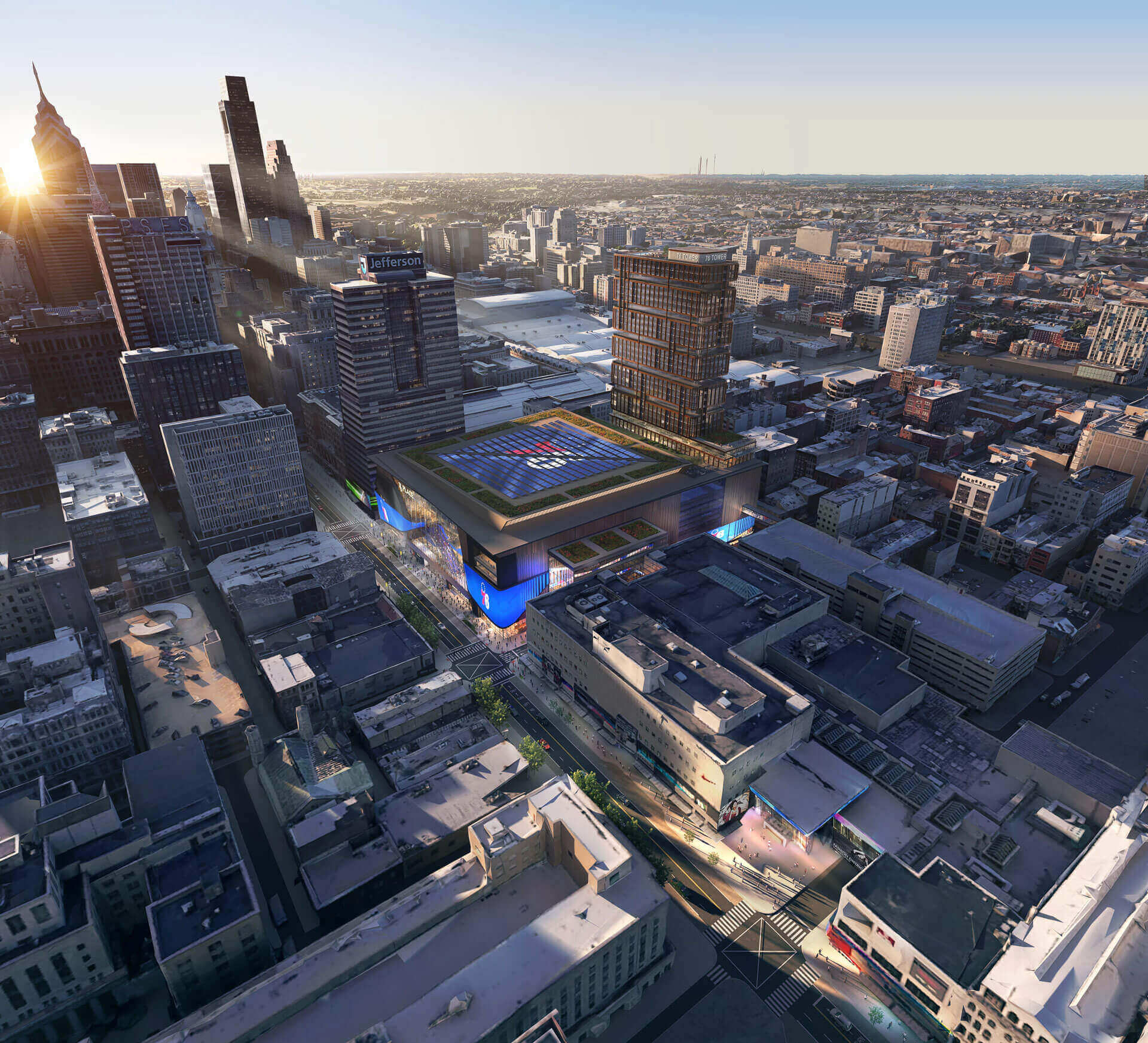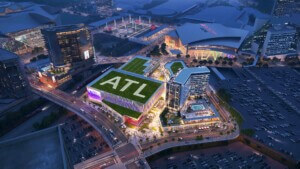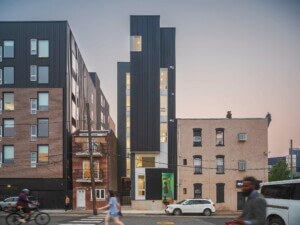On August 20, the steering committee at Design Advocacy Group (DAG)—a coalition of 2,100 building industry professionals in Philadelphia—issued a written statement critiquing a proposed downtown revitalization plan in Central City, Philadelphia by 76 DevCo. and Gensler. The $1.3 billion plan would deliver a new sports entertainment district for the 76ers featuring a new stadium, restaurant and retail spaces, and a twenty-story residential tower with 395 market-rate and 79 affordable units.
Last week in The Philadelphia Inquirer, 76 DevCo. spokesperson Nicole Gainier responded to DAG’s letter, claiming that it had “several glaring inaccuracies” and was an attempt at minimizing an “unprecedented private sector development,” Gainier said. Jordan Goldstein, a co-firm managing principal at Gensler who leads the project design team, clarified those alleged inaccuracies for AN, saying that DAG’s statement had three main issues.
“There was a comment made about the project not generating 24/7 activity and that it would only be bustling during game days,” Goldstein said. “In response, we feel that we’ve been hearing the community throughout the effort, and we recognize it needs to be a 365-day-a-year project. It needs to be a mixed use project that delivers on game days and non game days,” he continued. “We lifted the arena in order to do just that, to create retail and restaurant opportunities that will engage the street level and activate 10th, 11th, and Market Streets.”
According to Goldstein, the second inaccuracy pertained to “burying” SEPTA’s Jefferson Street Station. “We’ve lifted the bowl of the arena up above the station. This allows the station to maintain its key access points and its double-height platform experience,” Goldstein elaborated.
The third alleged misnomer according to Goldstein came in DAG’s statement calling the new stadium complex a “gigantic blank box.” Goldstein responded by saying that the design and development team’s proposal “is not sitting on top of a mall. It’s replacing a third of the mall that’s not functioning well and improving access that does not exist right now,” Goldstein said. “Today, there’s this scenario where you have to walk around the block to traverse the neighborhood. This approach creates pathways to address that.”
Goldstein further elaborated that the “images that have been put out are a concept at this stage.” He added that the planning process is still in its early stages. “This is a process for an arena that will be built in 2031, not tomorrow, so it’s important that projects of this scale have these long gestation periods so that there can be exploration and dialogue,” he said.

When asked about the tangible benefits the $1.3 billion revitalization plan would deliver for Chinatown residents, Goldstein noted that, today in downtown Philadelphia, “there’s really not a lot of space for gathering.” He says that this plan would add an atrium space on Market Street and another in the bridge over 10th Street that can be used for gathering, community events and celebrations. “If people are open to the idea that there’s an opportunity for a program of uses beyond just sports, there’s great opportunity here,” he said. Goldstein also pointed to an endorsement from the Building Industry Association which backs the project by 76 DevCo. as a major jobs creator for Greater Philadelphia; the developers claim it will put 12,000 laborers to work.
To date, the project has drawn criticism from other organizations including the Philadelphia Chinatown Development Corporation, Asian Americans United, and the Save Chinatown Coalition. Philadelphia architecture critic Inga Saffron has also vocalized criticism of the plan.
In response to concerns about gentrification, Goldstein told AN that Gensler and 76 DevCo. “fully recognizes that there needs to be a community dialogue,” he said. “At Gensler, we believe that design is a collaborative process and that design is richer when there are more voices than less at the table.” He added however that the designers “can’t satisfy all the needs that have been voiced but the project needs to entertain, filter, and vet them throughout the process to ensure the project adds to – not takes away from – the surrounding community.”











